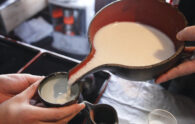On October 17th, Z Hall in Oshu was the venue for the AAA Symposium 2015 in Tohoku, “What the International Linear Collider Can Do.” This was the first time that new KEK Director-General Masanori Yamauchi has come to Iwate to speak after his appointment. Following the Director-General’s lecture “Four Mysteries that Particle Colliders can Solve,” were lectures by Satoru Yamashita, head of the Large Project Department at AAA and Associate Professor at Tokyo University, and Hiroya Masuda, Japan Policy Council Chairman and former governor of Iwate. Around 800 people attended, including many high school and middle school students.
The event was hosted by the Iwate ILC Accelerator Science Promotion Council, the Iwate Prefecture International Linear Collider Promotion Council, the Tohoku Conference for the Promotion of the ILC, the Japan Policy Council, and the Advanced Accelerator Association Promoting Science and Technology (AAA) and backed by a laundry list of twelve organizations including KEK, Iwate Prefecture, Oshu City, and Kanegasaki Town.
The Director-General’s lecture was on four fundamental riddles that particle physics is investigating:
- Where did mass come from?
- What is dark matter?
- Where did antimatter get to?
- What is happening with the expanding universe?
These riddles are what particle physics is pursuing, and what Japan wants to continue to pursue as a leader in particle physics. Dr. Yamauchi finished his lecture by explaining what research KEK was doing to facilitate building the ILC.
Dr. Yamashita and Mr. Masuda’s lectures covered important points in a complementary way, with Dr. Yamashita speaking from a more scientific perspective and Mr. Masuda with a focus on urban development.
・Where accelerators are in Japan and the world, what fields contribute to their manufacturing and maintenance, and what fields they contribute to.
・How accelerators contribute to humanity’s wellbeing
・The progress made up until the present with the ILC project, and
・Recent developments including the Tokyo ILC Symposium and visits/progress made with the US.
I was happy and proud to hear one theme in all three lectures: all impressed on the audience that Japan is a leader in particle physics, and one piece of evidence showing that is the number of particle physicist Nobel prize winners Japan has produced, including Dr. Takaaki Kajita this year.
I was especially happy our lecturers could say “Our country is a leader in particle physics and continues to contribute to human progress” to many middle and high school students in the audience. The organizers of this event made a significant effort to get young people to come. The whole event even started out with some extremely youthful energy as local children performed the Iwate National Sports Festival dance and finished up with a message about the ILC: “Our dream for the future: ILC!” This message pleased Dr. Yamashita so much that he altered one of his slides to include it.
The ILC truly is not for us: it’s for the next generation and the generations after.

Over 800 people attended the symposium
Impressions from young people
So, what did some members of this next generation have to say about the symposium? Here’s a few impressions from some younger audience members.
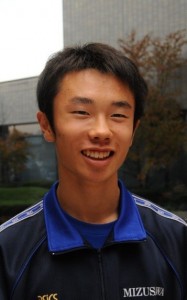 Ryo Hiraoka, 1st year student at Mizusawa High School
Ryo Hiraoka, 1st year student at Mizusawa High School
“Mr. Yamauchi explained about “four mysteries of the universe” in his speech. I think these mysteries are ones researchers all over the world haven’t been able to solve over many years. The fact that the ILC, which will give clues to solve these mysteries will possibly be built not only in Japan but in Iwate is a great honor. It was very interesting to me, as I aim to study science in university.”
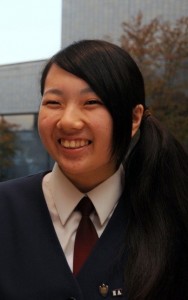 Reina Sato, 3rd year student at Mizusawa Business High School
Reina Sato, 3rd year student at Mizusawa Business High School
“I learned that the realization of the ILC would make the area around Oshu city an international research base, and widen the horizons for various fields like medical care, life science, information science, and energy. In the future I want to contribute to building a community that’s easy to live in through a job in social welfare. I hope that Tohoku will develop into an attractive are through the ILC.”
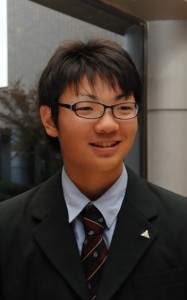 Mizuki Sato, 1st year student at Mizusawa Daiichi High School
Mizuki Sato, 1st year student at Mizusawa Daiichi High School
“This is the second time I’ve listened to a talk about the ILC. In this event, I learned that “the ILC will make the first international research base in Asia” and what that means. If the ILC is constructed, Iwate will become “a center of science and technology for the world.” Thinking this make me really impatient for it to be finished. An evolving Iwate: I want to study hard to be able to contribute to that.”
Japanese
先端加速器科学技術推進シンポジウム2015in東北10月17日、奥州市のZホールで「先端加速器科学技術推進シンポジウム2015in東北」が開かれました。講師には、山内正則KEK機構長、山下了先端加速器科学技術推進協議会大型プロジェクト研究部会長・東京大学準教授と増田寛也日本創成会議座長・前岩手県知事でした。多くの中校生・高学生も含めて約800人の市民等が参加しました。
山内先生の講演では「加速器で解き明かす4つの謎」という内容で、素粒子物理学の謎やKEKでILCのために取り組んでいることを解説しました。山下先生と増田先生は加速器の特徴と成果、ILCの今までの進展と最近の動向などについて科学的な観点と地方創生の観点から紹介しました。
講演で一つ共通していたのが、日本は素粒子物理学で世界のトップレベルにあり、その一つの証明として、今年の梶田隆章教授も含め数多くの日本人のノーベル物理学賞受賞者がいることを強調していたことです。聴講している多くの中学生と高校生がこれを聞くことができたのは嬉しかったです。
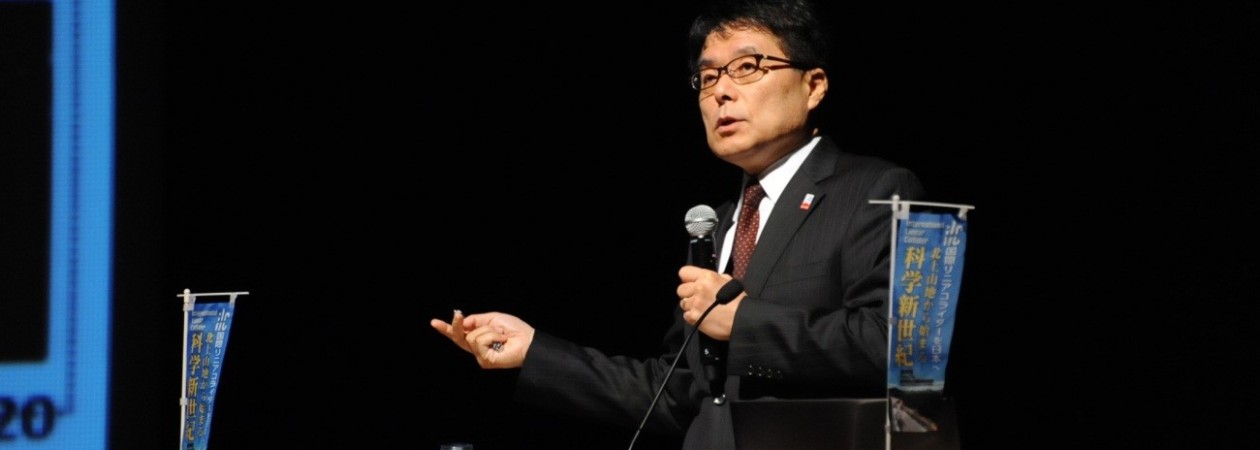
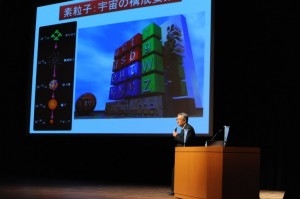
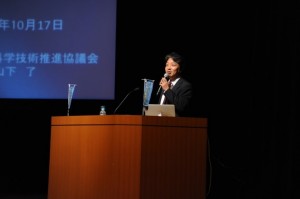
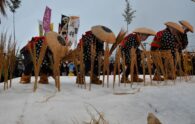
-195x124.jpg)
